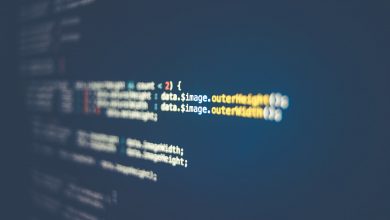
Scorp ransomware is a type of malware that encrypts all the files on a computer until the user pays a ransom. Scorp encrypted files will have a .scorp (files are also appended with the cyber criminals' email address and a unique ID) extension appended at the end of the file name. Scorp is delivered through a Win32 EXE file and has been spotted inside the following files and processes: ['sc0rpio@mailfence.com.exe.[sc0rpio@mailfence.com][MJ-OW8746310592].scorp (copy)', 'sc0rpio@mailfence.com.exe']
Table of Contents
What is Ransomware?
Ransomware is a type of malicious software that encrypts a victim's data. The attacker then demands a ransom to restore access to the data upon payment. The earliest examples of ransomware date back to the 1980s, but its current form first appeared in the early 2000s. In the present day, ransomware has become one of the most common types of malware.
How Does Ransomware Spread?
Ransomware is typically spread via email phishing campaigns or through malicious links or attachments. These campaigns will often employ social engineering techniques to convince the recipient to open or download the ransomware. They may also use exploit kits to infect systems with malware.
Scorp Ransomware Capabilities
Scorp ransomware may use process injection techniques to evade process-based defences as well as to elevate privileges. By injecting code into other processes, Scorp ransomware may be able to access those processes' memory, system/network resources, and possibly elevated privileges. Additionally, the code injection may help to evade detection from security products. Scorp ransomware is known to use a variety of techniques to infect victims' computers and encrypt their files. These techniques include exploiting vulnerabilities in software, using non-application layer protocols, and spam email campaigns.
Scorp ransomware also uses a variety of techniques to gain access to and extract information from a target system. These techniques include file and directory discovery, as well as the use of custom tools to interact with the native API. The ransomware uses this information to determine which files to encrypt and to shape its subsequent behaviour.
Mitigations Against Scorp ransomware:
There are several ways to mitigate the risk of a Scorp ransomware attack. One is to use endpoint security solutions that can block process injection. Additionally, employees should be educated on how to spot a potential ransomware attack, and what to do if they think they may have been infected. Backups can also be created and stored offline to be restored in the event of a ransomware attack.
How to Remove Ransomware?
Since there are so many types of ransomware out there, there are different ways to remove them. Some of these are manual, while others are automated. To remove ransomware, you can either restore your system to an earlier state or try to decrypt your files. Here are some ways to do this.
Restore your system to an earlier state. If you're infected with ransomware and you don't have any backups, then you can use an antivirus program to remove the ransomware and restore your system to an earlier state. However, this is only possible if the ransomware doesn't destroy your system's boot files.
If you're infected with ransomware and have backups, you can use those backups to restore your files. This is only possible if the ransomware didn't destroy your backups
Use decryption tools If you're infected with ransomware and you do have backups, you can use those backups to restore your files. This is only possible if the ransomware didn't destroy your backups.
How to Protect Against Ransomware?
Routinely back up your data. This is the first step to getting your data back if it gets encrypted. It's also the best way to protect yourself against ransomware since you can restore your data from a backup if an attack does happen. Furthermore, use antivirus software that includes ransomware protection. This software can block known malicious files from ever reaching your devices. Use caution when clicking on links and downloading files. Cybercriminals often use social engineering tricks to entice victims to download malware.





Leave a Reply
Thank you for your response.
Please verify that you are not a robot.